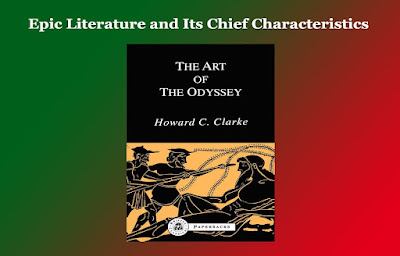Irony and Its Uses in Literature
Irony and Its Uses in Literature
Introduction to Irony:
Irony, a literary device characterized by a gap between appearance and reality, has been a powerful tool in the hands of writers for centuries. Its subtle nuances and ability to convey meaning through contradiction have allowed authors to create layers of meaning, provoke thought, and engage readers in a profound exploration of the human experience. This article delves into the various forms of irony and explores how writers employ this device to enhance the depth and complexity of their narratives.
I. Understanding Irony:
A. Definition:
Irony can be broadly defined as the expression of one's meaning by using language that signifies the opposite, often for humorous or emphatic effect. It plays with the audience's expectations, leading them to perceive a situation or statement in a way that diverges from the intended meaning.
B. Types of Irony:
Verbal Irony: Occurs when a speaker says something but means the opposite. Sarcasm is a common form of verbal irony, where the literal meaning is different from the intended meaning.
Situational Irony: Involves a situation in which the outcome is significantly different from what was expected or intended.
Dramatic Irony: Arises when the audience knows something that the characters in the story do not, creating tension and anticipation.
II. The Role of Irony in Literature:
Enhancing Narrative Depth:
Irony adds layers to a narrative by introducing unexpected twists and turns. Writers use irony to challenge readers' assumptions, prompting them to reevaluate characters, events, and themes within the story.
Social Commentary:
Irony provides a platform for writers to comment on societal norms, behaviors, and issues. By juxtaposing reality against expectation, authors can highlight the absurdities or contradictions present in the world around them.
Character Development:
Through irony, writers can reveal the complexity of characters. A character's actions or statements, when contrasted with their true motives or circumstances, can create a nuanced portrayal that adds depth to the narrative.
Humor and Satire:
Irony is a powerful tool for injecting humor into literature. Satirical works often rely on irony to criticize or mock individuals, institutions, or societal conventions by exposing incongruities and contradictions.
III. Notable Examples:
Shakespearean Irony:
The works of William Shakespeare are rife with irony. In "Romeo and Juliet," dramatic irony is employed when the audience knows that Juliet is not dead, but Romeo is not aware, leading to tragic consequences.
Swift's "A Modest Proposal":
Jonathan Swift's satirical essay employs verbal irony, as he suggests a "solution" to Ireland's economic problems by proposing the consumption of infants. The true intent is social commentary on the exploitation of the Irish.
O. Henry's Short Stories:
The short stories of O. Henry, such as "The Gift of the Magi," often feature situational irony. Characters unknowingly make sacrifices for each other, only to find that their sacrifices negate each other's intentions.
Conclusion:
In conclusion, irony in literature serves as a versatile and indispensable literary device, allowing authors to explore the intricacies of human nature, society, and the human experience. By employing verbal, situational, and dramatic irony, writers create narratives that captivate readers, challenge perceptions, and leave a lasting impact. As literature continues to evolve, irony remains a timeless tool for conveying profound messages and enriching storytelling. 0 0 0.
Irony and Its Uses in Literature
Articles on Literature:
- What is Paradox in Literature
- What is a Tragedy in Literature
- What is Dystopian Literature
- What is Pathos in Literature
- Allusion in Literature
- Motifs in Literature










Comments
Post a Comment
Comment should be honest and suggestive